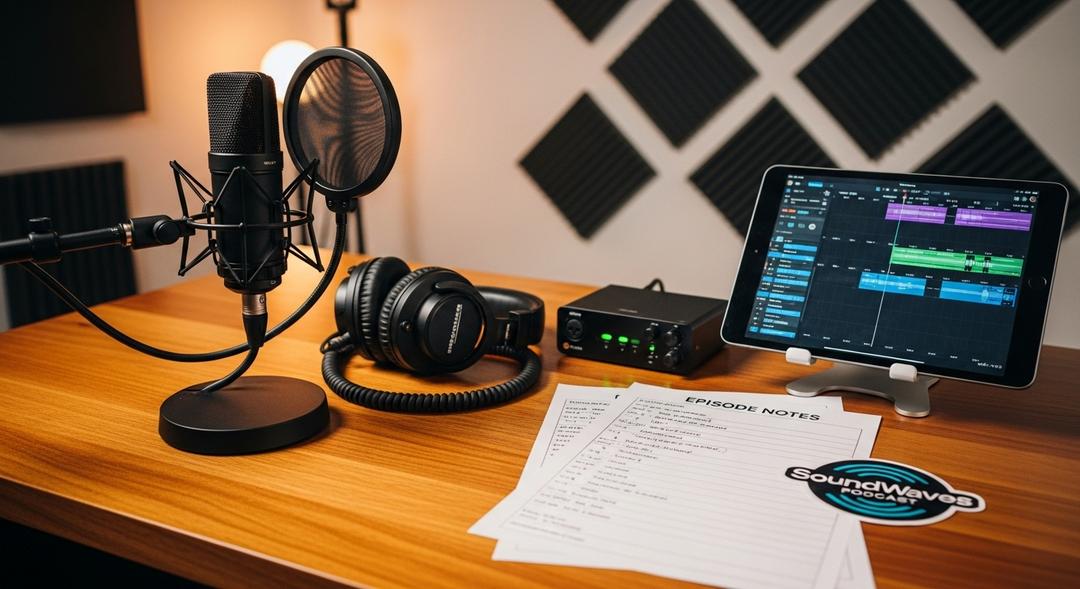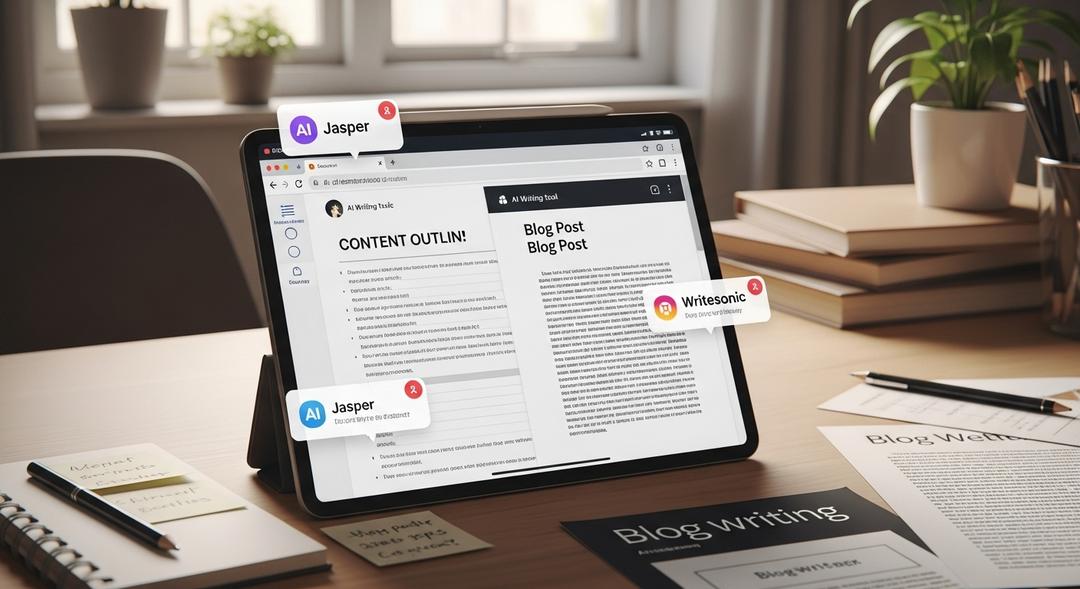Podcast AI tools have changed how creators work by automating production and improving overall episode quality. These digital podcasting solutions handle planning, recording and publishing, allowing beginners and experienced hosts to boost their workflow while focusing more on creativity.
With technology now central to podcast production, knowing the many features and advantages is vital. Whether you aim for automatic scriptwriting, editing, transcription or improved audio, you can find the right audio editing tools for every step in your podcast journey.
What are the benefits for using Podcasts AI Tools
Podcast technology brings many significant benefits to the creative process. It simplifies podcast editing and manages complex steps to maintain high output standards with less manual effort.
- Saves time by automating editing, transcription and publishing tasks.
- Provides clearer, more consistent audio using noise filters and leveling features.
- Fuels content variety by generating scripts, outlines and even promotional graphics automatically.
1. ChatGPT
Features
- Creates scripts, interview outlines and content plans tailored to your podcast style.
- Helps brainstorm new episode ideas or show segments.
- Condenses long transcripts for concise episode notes.
- Works for a variety of topics, adapting tone and subject as needed for all genres.
Pros
- Simplifies episode planning and structure.
- Levels up research and theme exploration.
- Offers conversation ideas to avoid creative blocks.
- Syncs with most workflow management platforms.
Cons
- Requires review to format outputs for audio scripts.
- Needs updates for the latest news and events.
- Does not support direct voice or track editing.
Pricing: Basic access is free, with subscriptions available for premium features.
2. Auphonic
Features
- Levels volumes and adapts to changing input sound levels.
- Reduces background noise and electrical hums in recordings.
- Handles multi-track editing for several voices or sources.
- Processes batches of episodes automatically for larger workloads.
Pros
- Produces clear, professional broadcast sound quickly.
- Saves post-production time by automating routine steps.
- Cloud operation supports seamless integration into your setup.
Cons
- Basic plan includes a limited number of processing minutes each month.
- Some advanced features require a premium subscription.
- An internet connection is required for every session.
Pricing: Free option available, with pay-as-you-go and monthly packages based on usage.
3. ContentShake AI (Semrush)
Features
- Suggests ideas for podcast episodes and blogs in trending topic areas.
- Automated outline creator for episode structure and show notes.
- Improves search discoverability through SEO optimization for descriptions.
- Refreshes or rewrites old scripts for updated content cycles.
Pros
- Strengthens visibility with search-optimized content.
- Makes content planning simple for new and skilled podcasters.
- Intuitive tools designed to fit all experience levels.
Cons
- Takes some exploration to use every feature fully.
- Focus is heavier on writing instead of voice editing.
- Subscription costs may not fit every budget.
Pricing: Try for free within a Semrush account, with paid options available for extended use.
4. Descript
Features
- Turns audio and video files into editable text instantly.
- Supports multi-track recording and deep editing.
- Overdub tech for voice cloning and quick error correction.
- Comes with advanced video features, like screen recording and audiograms.
Pros
- Easy, unified editing for both audio and video.
- Drag-and-drop editor simplifies mixing episodes.
- Team-friendly tools for group podcasting operations.
- Exports content for a range of platforms and formats.
Cons
- Needs a capable device to handle editing smoothly.
- Overdub may not match natural voice tone exactly.
- Transcription accuracy depends on the original quality of the audio file.
Pricing: Free and premium versions available, with more features in powered tiers.
5. Podigee
Features
- Easy publishing and wide distribution support for all podcast platforms.
- Advanced analytics for listener behavior and performance tracking.
- Audio enhancement features built in for clean listening.
- Custom podcast sites and audio players you can embed anywhere.
Pros
- Simple migration from other podcast hosting services.
- Strong reliability and platform uptime.
- Insights to shape and grow audience reach.
Cons
- Some custom options are locked behind higher tier accounts.
- No integrated marketing automation.
- The focus is mainly on hosting, not direct creation tools.
Pricing: Subscription tiers based on storage, analytics depth and extras.
6. Alitu
Features
- Cleans up audio tracks with noise reduction and volume fixes.
- Builds episodes with simple editing and assembly features.
- Offers a built-in library for music, intros and outros.
- Publishes finished episodes straight to leading hosting platforms.
Pros
- Beginner-friendly and intuitive for users with limited editing skill.
- Helps maintain steady, high-level audio quality.
- Guided workflow makes the entire production stress free.
Cons
- Lacks advanced controls for audio professionals.
- Limited free features; core tools need a paid subscription.
- Best for solo podcasters or small teams.
Pricing: Available with monthly or annual plans, featuring a free trial period.
7. Ausha
Features
- Podcast hosting, global distribution and analytic reporting in one place.
- Sound optimization for improved listening experience.
- Automated marketing to attract more listeners to new episodes.
- Smart links and easy sharing for social networks.
Pros
- Handles all podcast requirements in a single dashboard.
- Reliable growth tools to increase awareness and engagement.
- Instant publishing and simplified workflows.
Cons
- Advanced automation tools located in premium accounts.
- May require training for maximum marketing benefit.
- Analytics not as thorough as those in stand-alone reporting apps.
Pricing: Monthly subscription models to match user needs.
8. Riverside
Features
- Remote high quality recordings for both audio and video podcasts.
- Creates separate local tracks for every participant.
- Offers live interaction and call-ins from the audience.
- Provides quick transcriptions and efficient editing features.
Pros
- Studio sound and footage even on low bandwidth connections.
- Ideal for remote interviews and group panel discussions.
- User interface is simple and accessible.
- Fast exporting for every major podcast platform.
Cons
- Works best on reliable devices and browsers.
- Video features may need a higher priced plan.
- Larger recordings mean greater storage needs.
Pricing: Multi-tiered subscriptions, with extra services for teams and pro users.
9. Opus Clip
Features
- Turns long podcast sessions into brief, engaging video highlights ready for sharing.
- Automatically marks episode’s most engaging points for highlighting.
- Comes with templates for each social network format.
- Exports finished clips for use everywhere online.
Pros
- Expands each episode’s reach by repurposing podcasts into video content.
- Lowers manual workload for creating teasers and snippets.
- Improves discoverability with social clips.
Cons
- Not meant for in-depth audio clean up or technical edits.
- Sometimes highlights may need manual review for relevance.
- Most useful for visual content creators.
Pricing: Free plan for casual use, payment required for extended access and more video features.
10. Listener.fm
Features
- Creates episode recaps and show notes automatically.
- Generates effective episode titles and social media posts.
- Integrates easily with hosting services and platforms.
- Automates promotion for each release.
Pros
- Cuts down time spent preparing episodes for release.
- Optimizes visibility using catchy and efficient summaries.
- Simplifies work for teams running multiple shows.
Cons
- Control over output may be limited for creative users.
- Many useful tools require a subscription.
- Manual edits are still needed for audio or expert polishing.
Pricing: Offers a variety of monthly plans matched to episode output and automation needs.
Conclusion
Podcast technology has streamlined production routines, transforming planning, recording and editing so creators and teams can produce compelling shows with minimal busywork.
As you explore these podcast solutions, consider how each option fits your workload, budget and creative requirements. Leveraging effective audio editing tools and robust transcription platforms helps you focus on delivering memorable series your audience will appreciate, while reducing time spent on repetitive post-production details.
Here are five keywords this article could rank for: podcast technology, podcast editing, podcast workflow, podcast transcription, audio editing tools. These are naturally integrated throughout the article for an SEO boost.








